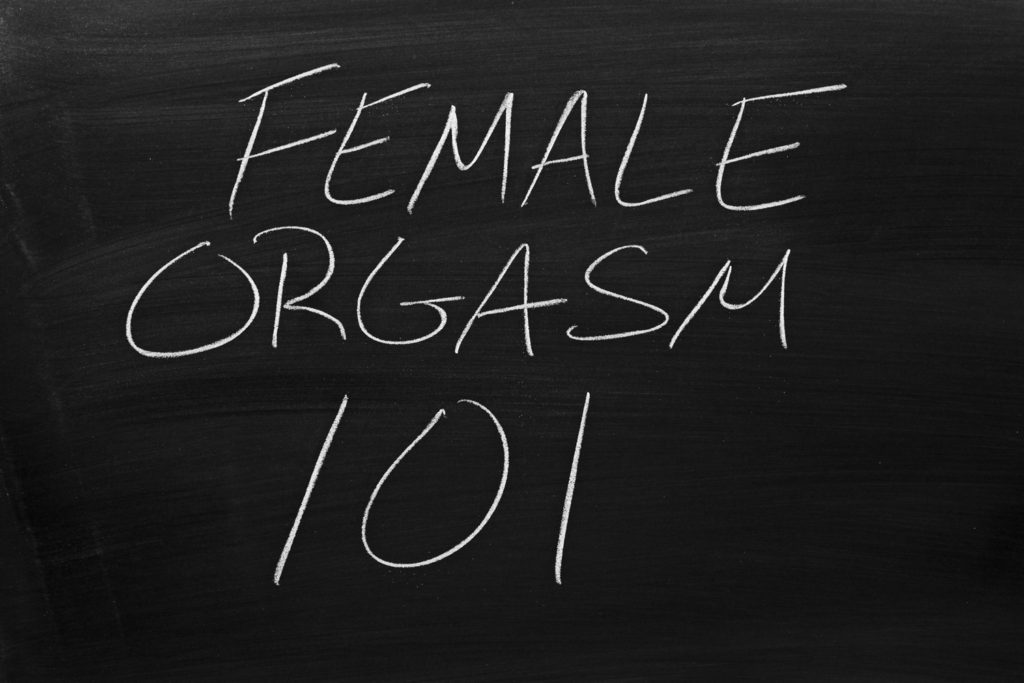By far the most common way for a woman, or anyone with a clitoris, to regularly reach orgasm is through direct or indirect clitoral stimulation. Before we just into that subject, I think it may help to share with you some information about the clitoris.
The clitoris is located just by the vaginal entrance and behind the labia minora. In most women, it is a small nub of flesh which contains a high concentration of nerve endings which make it highly sensitive. It is often covered by a clitoral hood. Many people don’t realize that only a small portion of the clitoris is actually visible. The remainder of the organ is surrounded by the rest of the reproductive system and extends all the way to the bottom of the pubic bone.
Two things are particularly interesting about the clitoris. First, all female mammals have a clitoris. This is interesting because the sole purpose, at least according to biologists, of the clitoris is sexual pleasure. That would seem to mean that humans aren’t the only ones who enjoy the way sex feels. Thank goodness!
Second, the clitoris is made from the same material as the penis. In fact, in men the clitoris becomes a full-fledged penis after the embryo is exposed to testosterone in the womb. Just like the penis, the clitoris fills with blood and becomes erect during sexual arousal. The clitoral hood is essentially the same as the foreskin of a penis. The only real difference between a clitoris and a penis besides location in the body seems to be that the penis is also used for urination while the clitoris is not.
The clitoris is really similar in size to the penis, even though most of it cannot be seen. Vibrations through the pelvic region caused by intercourse could stimulate the nerve endings in the unseen part of the clitoris as well and this can also cause orgasms.
What many people don’t realize about the clitoris is that the penis in the vagina alone usually cannot stimulate it. Because of its position in the woman’s body, the ability of the penis to provide rhythmic stimulation to the clitoris is extremely difficult. That means traditional intercourse usually needs to be coupled with clitoral stimulation, whether with a finger or device. For example, penetrating the vagina while also stimulating the clitoris in one way or another is a good approach if the couple wants to achieve orgasm at or near the same time.
The best thing about clitoral orgasms is that they can be achieved in many different ways. Another good health outcome with clitoral orgasms is that women who enjoy them regularly may have a decreased risk of heart disease and type 2 diabetes. Because the entire clitoral area is highly sensitive, experimenting with these types of orgasms can also add some interest and spice to sexual relationships which may have become less enthusiastic over time.
Because the clitoris does not need to be erect for sexual intercourse to occur, clitoral orgasms will only happen if the woman is aroused properly. That means some type of foreplay is generally a requirement. When the clitoris is stimulated repeatedly, it becomes more engorged with blood and this further heightens its sensitivity. With another stimulation a point is reached when all of the tension in the area must be released and this point is considered the orgasm.
And the key is experimenting because different women prefer different types of clitoral stimulation. While some prefer direct stimulation, others find it uncomfortable and prefer to have the area around the clitoris stimulated instead. Women who have masturbated will generally have a much better idea of what type of stimulation they prefer than women who have not. So ladies, be sure to explore and when you find what you like, remember that pleasure point whether you are solo or with a partner…


